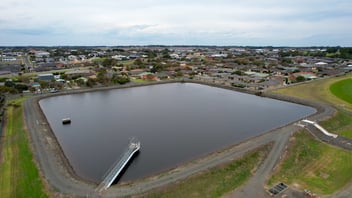Investment set to bolster Norfolk Island water security
With no reticulated water supply, residents of Norfolk Island rely on rainwater tanks and groundwater. But declining rainfall means water is running out and long-term solutions are needed.
Located in the South Pacific Ocean between New Caledonia and New Zealand, the island is home to about 2000 people, some of whom have already run out of water.
On Norfolk, 17 of the last 20 years have seen below average annual rainfall, said former Emergency Management Norfolk Island (EMNI) Committee Controller Bruce Walker.
“This drought is currently the fourth most severe drought on record,” he said.
“Many consecutive years of below average rainfall (which we have experienced and is projected to continue to decline well into the future) can result in a large ‘amplified’ reduction in groundwater recharge.
“This can lead to a disconnection between surface water and groundwater systems, dramatically reducing streamflow of surface water.”
As a temporary measure, the Federal Government and the Australian Defence Force set up a water purification and desalination plant on the island, which can produce 100,000 L of drinking water per day.
The government also asked the CSIRO to provide scientific advice to the Norfolk Island community, Norfolk Island Regional Council and EMNI to help bolster water resilience.
It has announced a range of water resilience investments for the island based on the CSIRO’s assessment.
Assistant Minister for Regional Development and Territories Nola Marino announced projects and funding to build resilience to extreme weather on the Island in December last year.
“This new investment in desalination projects, emergency shelters and bushfire and emergency management will ensure that Norfolk Island is well prepared for weather emergencies,” Marino said.
“The government will work closely with the Norfolk Island Regional Council, stakeholders and the community as these important projects are progressed.”
The government committed to establishing containerised desalination as well as a $1.5 million investment in site selection and design for an emergency shelter, $80,000 for the development of a bushfire management plan and $200,000 for an assessment of the local emergency management arrangements.
Marino said the government aimed to ensure further progression towards sustainability and liveability on the Island.
“I am very much looking forward to speaking with local residents directly, deepening my understanding of Norfolk Island’s current opportunities and challenges and providing information on key priorities and issues,” she said.
The CSIRO assessment built upon recent questionnaire responses, existing studies and local knowledge to provide a contemporary understanding of opportunities to increase water security.
CSIRO also undertook data collection and field measurements, including the amount of water infiltrating into the soil, surface runoff, groundwater storage and water use by vegetation.
EMNI’s Walker said the community had more to do in preparation for changing weather patterns, but that this was required to ensure the sustainability of the Island.
“While we can’t control the weather patterns, there are things that we can control, for example, how much water we catch and store on our individual properties and for our businesses,” he said.
“There is undoubtedly much more we can do as a community to adapt to the changed weather patterns to protect our sustainability.
“Without taking action, the sustainability of our lifestyles, community, businesses, agricultural enterprise and essential services are threatened, and the risk of a water related emergency, as has happened on many other islands around the world, is increased.”

